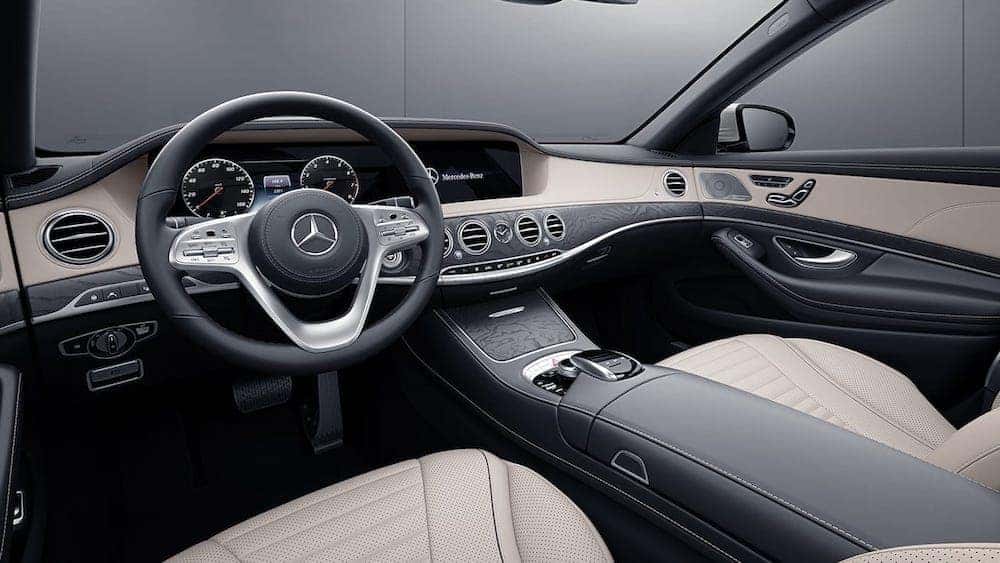When it comes to luxury vehicles, Mercedes-Benz and Porsche stand out as two of the most iconic German automotive brands. Both are renowned for their high performance capabilities, state-of-the-art engineering, and luxurious interiors. However, Mercedes-Benz and Porsche take somewhat different approaches when it comes to the look, feel, features, and overall aesthetic of their interior designs. In this article we talk about Mercedes-Benz and Porsche Interior Designs Explored.
Mercedes-Benz Interiors: Blending Technology and Tradition
Stepping into a new Mercedes-Benz model, you immediately notice the blend of high technology and old world craftsmanship apparent throughout the cabin space. Mercedes tends to use real metal and wood trims more liberally compared to other brands. You may find hand-finished wood panels, aluminum controls, and even crystal embellishments depending on the model. This gives many Mercedes interiors a more classical look and feel, hearkening back to an earlier era of craftsmanship while still incorporating the latest tech.
The user experience behind the wheel is optimized for both comfort and connectivity. Multi-contour front seats swaddle occupants in leather and suede while ambient cabin lighting sets a relaxing mood. The MBUX infotainment system features vibrant widescreen displays, natural voice controls, and an intuitive touchpad interface. On higher trim lines, drivers may also enjoy heated/ventilated seats with a massage function. Overall, Mercedes aims to create a sensory experience that pampers and rejuvenates.
Attention is also paid to soundproofing and ride quality to enable productive work or relaxation while in transit. Cabins emphasize fine materials and design elegance to elevate the overall luxuriousness. Buyers can further customize their interiors from an extensive catalog of upholstery colors/materials, wood trims, alloy art inlays, and more. Mercedes gives ample opportunity to express personal style.
Porsche Interiors: Sporty Functionality with Premium Materials
Sitting inside a Porsche reveals an interior philosophy with sharper focus on the sporty DNA ingrained in the brand. You recognize the no-nonsence functionality throughout the layout which spotlights the driver-centered instrument panel. Premium leathers and brushed metals abound, but the emphasis is more subtle than ornate. Porsche interiors have a simple style compared to Mercedes, but they still feel luxurious.
The low-slung seating profile, indented door panels, and driver-angled center console all work together to ensconce you in the interior while keeping controls within easy reach. Key touchpoints like the steering wheel, gear shift, and door handles feel properly weighted with metal heft. Porsche understands that a luxury sports car should still convey athletic sensibilities through the cabin environment.
Even in their SUV models like the Cayenne, Porsche retains this principle of enveloping occupants in an intelligently designed cockpit-like space. Advanced technologies aid performance without compromising driver engagement. For example, Porsche integrates digital displays into the instrument cluster but retains traditional gauges and tactile buttons critical to sporty driving. Buyers also get extensive personalization for interior materials and racing-inspired accents like carbon fiber trim and Alcantara suede.
Mercedes Emphasizes Cocooning Comfort While Porsche Focuses on Cockpit Control
Mercedes-Benz clearly leads with interior comfort and enrichment with its cabins bathed in ambient lighting, swathed in massaging seats, and embedded with premium details. Porsche instead puts function first to immerse drivers in an environment purpose-built for sporty performance. Yet both automakers infuse their vehicles with cutting-edge digital tech and extensive customization options befitting their luxury statuses.
These two brands respectively excel at the grand touring and sporting sides of luxury. Mercedes cossets passengers in first-class accommodations for the interstate cruise while Porsche connects drivers to the road for those weekend canyon carves. Ultimately though, personal taste plays a major role here. Comfort or control? Both approaches have their merits in satisfying luxury buyers.
The Future of Luxury Vehicle Interiors
Looking ahead, expect Mercedes and Porsche to further leverage digital capabilities for more personalized, context-aware, and automated experiences. Voice-activated AI may dynamically adjust cabin settings based on biometrics and learned behaviors. Predictive touchscreens could serve up relevant information and recommendations before drivers ask. Integrated sensors throughout seats may monitor posture and environment to automatically dial in optimal ergonomic positions over time.
And more sustainable materials will likely supplement (or replace) traditional leathers/metals as eco-conscious values influence luxury expectations. Both brands already incorporate some synthetic and recycled textiles but will likely expand these efforts. Sleeker, more contemporary aesthetics could also gain prominence with buyers. While heritage and craftsmanship carry cachet, younger luxury consumers have more progressive tastes.
The core philosophies of these brands will surely persist into the future. But Mercedes and Porsche will evolve to integrate digital trends and sustainability principles while retaining what makes them aspirational icons. The interplay of aesthetics, engineering and customization will continue to advance in compelling ways for discerning drivers. I sincerely hope you find this “Mercedes-Benz and Porsche Interior Designs Explored” article helpful.


ncuTmGLNUOHvX